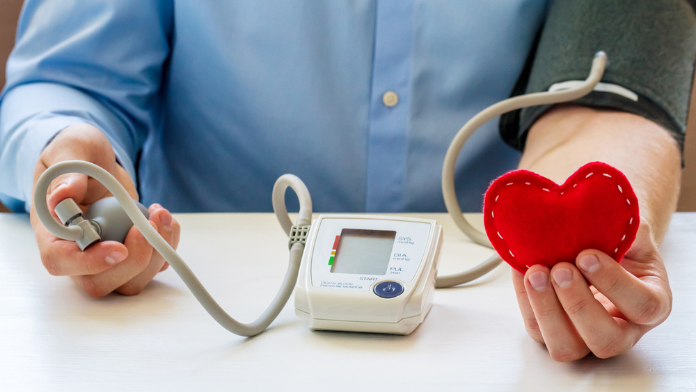The high pressure is one of the main risk factors for the development of cardiovascular disease, still today the leading cause of death globally, therefore it is essential research on new treatmentsincreasingly effective. THE antihypertensive drugs available today do not cure hypertension, but help control its levels, reducing the risk of heart attacks and other cardiovascular events.
High blood pressure is a condition in which blood pressure levels are higher than normal. Generally in multiple measurements >140mm Hg systolic blood pressure e >80mm Hg diastolica. The higher the pressure, the greater the stress on the arterial walls and, consequently, the risk of disease. The main risk factors are an unhealthy diet rich in salt, lack of physical activity and a high consumption of alcoholic beverages.
High blood pressure: treatments and tools available today
Medicines
Today, first-line treatments for hypertension involve the use of four categories of drugs, often used in combination. The ACE inhibitorsi angiotensin II receptor blockers (ARBs), i calcium channel blockers eh diuretics. In addition to these pharmacological treatments, there are also a series of strategies that place the patient at the center of attention. For example, there is a growing interest in the use of simple devices, such as the smartwatch. Or you try to improve patient s’ adherence to therapy through single polypills.
The polypill
The polypill is one tablet containing multiple active ingredients with different mechanisms of action, but useful for the treatment of the same pathology. “The term was born in 2001 when the World Health Organization proposed the use of a single pill containing the various drugs recommended for reducing cardiovascular risk (statins, antiplatelet agents, ACE inhibitors)” he explains Freed Berrinocoordinator of the Clinical Pharmacology section of the Italian Society of Pharmacology (Sif) and Professor of Pharmacology at the Luigi Vanvitelli University of Campania.
“His objective was that of reduce the onset of new cardiovascular events in patients with previous myocardial infarction, increasing adherence to treatment. Several clinical studies have been carried out over the years which have demonstrated the greater effectiveness of the use of this therapeutic strategy in reducing cardiovascular risk compared to the separate intake of the individual active ingredients”.
«The concept of polypill was then translated to other therapeutic areas. In the therapeutic armamentarium ofhypertension in fact, there are numerous pre-established associations of active ingredients with a synergistic mechanism of action. They have the advantage of allowing the patient taking two or more antihypertensive drugs once a day. Also in this case, adherence to treatment increases».
The role of the smartwatch
Physiologically, blood pressure values change frequently during daily activities and also in relation to mood. «The use of a device such as the smartwatch could contribute to a constant monitoring of these swings. These are smart devices that allow you to have constantly under control basic functions such as heart rate and blood pressure, as well as to record them and reproduce the data in the form of a graphic trend inherent in a particular time span» Berrino points out.
In reality, one often wonders when these devices are precise, given that the measured value is affected not only by physiological fluctuations, but also by the way in which the device is used. “The scope of these devices, in fact, it is not to replace the clinician in making diagnoses. But to make faster take-over of the patient, helping us to identify those forms of arterial hypertension that are difficult to detect during outpatient visits due to their sporadic nature”.
High blood pressure: tomorrow’s treatments
Gene silencing
Among the drugs currently under development are gene silencing drugs for specific angiotensin receptors (siRNAs), or for TRPC1-type calcium channels. «Medicine, through these futuristic applications of RNA interferencebecomes increasingly less invasive and more precise» underlines the expert Sif. “SiRNA-based therapeutic approaches have substantial potential to promote treatment adherence, a major unmet need in antihypertensive therapy.
Treatment of resistant high blood pressure
In parallel there is much interest in better understanding the mechanisms related to resistant hypertension. «Hypertension resistant to pharmacological therapies», continues Berrino, «is defined as the presence of high blood pressure values (above 140/90 mmHg and above 130/80 mmHg if the patient is diabetic or nephropathic) despite treatment with three or more antihypertensive drugs». It is estimated that about one in ten hypertensive people, which is almost 100 million people worldwideis resistant to treatment. “These patients have a three times higher risk to undergo cardiovascular events compared to subjects with controlled hypertension», says Berrino. “They are also more likely to suffer from diabetes, chronic kidney disease and obesity.”
Endothelin receptor antagonists
The endothelin receptor antagonists, currently used for the treatment of pulmonary hypertension, may also have a role in the treatment of resistant high blood pressure. “Their effectiveness is still being studied. But the published data appear to be promising» underlines the expert Sif. «A study published in 2022 showed the efficacy of an endothelin antagonist (aprocitentan) in the control of resistant systolic hypertension after four weeks of treatment and with still significant effect after 40 weeks. Previous studies had demonstrated the efficacy of other endothelin receptor antagonist drugs, such as bosentan e Darusentan, in reducing blood pressure values.
Aldosterone inhibitors
Finally, recent evidence suggests the role ofaldosterone in the onset of resistant hypertension. It is a hormone produced by the adrenal gland, involved for example in the regulation of plasma levels of sodium and potassium. «Therefore, research is focusing on the development of drugs that inhibit the production of aldosterone. Promising is the baxdrostat, which inhibits the enzyme (aldosterone synthase) which synthesizes the hormone» concludes Berrino. «The results of a randomized multicenter phase 2 study showed that the use of this drug is able to significantly reduce blood pressure in patients with resistant hypertension with minimal adverse effects. The encouraging results of this trial will then have to be confirmed with phase 3 studies, even if they open up new therapeutic perspectives».
